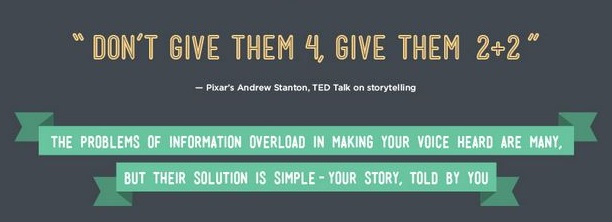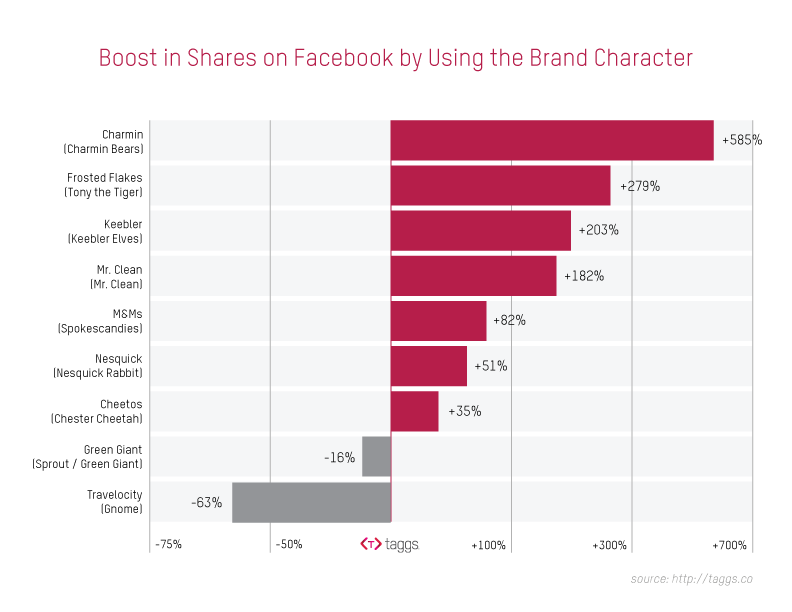Why Storytelling Matters: a Data-Driven Answer

There’s absolutely nothing new about brand storytelling. While the term is building buzz lately, it’s pretty much as old as the buyer-seller relationship – or perhaps even older. Some of today’s smartest organizations are mastering the art of telling tales on digital platforms, and experiencing remarkable results for their efforts.
If you’re unsold on just why brand storytelling is important, that’s fine. In fact, it’s wise to question everything. We’ve curated some impressive stats, facts, and case studies that demonstrate just why this method has a place in your content strategy.
To learn more, check out How B2B Brand Storytelling Can Benefit Your Business.
Why this Approach Matters
It’s easy to say that we’re living amidst information saturation, but what does that really mean? Consider the following facts:
- Every 60 seconds, 700,000 Google searches are performed.
- 5.3 trillion ads are shown online each year.
- The average consumer processes 100,500 digital words daily.
Consumers don’t mean to ignore your marketing messages; it just happens automatically. The ability to tune out content is something of a defense mechanism in today’s world. The solution, in the words of Pixar’s Andrew Stanton, is simple; “don’t give them 4, give them 2+2.” Your brand can almost certainly benefit from the ability to tell your messages in stories.
Case Study: Telling Tales for Brand Awareness and Sales
One of the most fascinating case studies we encountered was of Proclamation Jewelry, a high-end men’s jeweler who struggled to gain consumer engagement and brand awareness in spite of valuable products. Proclamation decided to design a tale in which their customer was the hero, based on the classic novel Monomyth by Joseph Campbell. By casting their products as a literal sidekick of their ideal customer, people started paying attention to Proclamation’s marketing messages. Within just one year, their sales had tripled.
There’s no evidenced that storytelling is a tactic limited to major brands with endless marketing budgets, or any other kind of niche organization. While Proclamation wasn’t a startup, they effectively conquered a problem that’s familiar to many small businesses; the need to build engagement from the ground-up on an extremely limited budget.
Case Study: Brand Characters Almost Always Work
Few tactics work across the board for all types of organizations. That fact alone is exactly why at Writtent we advocate an agile, data-driven approach to content marketing. However, when a case study crosses our desk of an approach that works for all kinds of companies, we pay attention. Surprisingly, it looks like brand heroes fit the bill. Not just any brand heroes, though; branded characters.
In a fascinating case study, Mark Kelley of Taggs reported that “most brand characters do well” when it comes to increasing Facebook engagement for brands. While this study included thousands of brands who used a mascot in at least some of their Facebook posts, a few notable results are included below:

Kelley concluded that visual brand storytelling centered on a recognizable hero was a pretty effective content marketing crutch for brands, especially those who were marketing products with a slightly less glamorous image. The brand with the highest increase in Facebook engagement in this case study (Charmin at 585%) is a prime example of this. Would you feel compelled to like, share, and comment on posts about toilet paper? Unlikely, but the presence of their loveable brand mascots, the Charmin bears, makes their content so much more likeable.
While not every brand in this case study benefited from brand mascots, don’t let that encourage you. As Kelley points out, for Travelocity and Green Giant, their brand mascots were competing against some content that was naturally pretty engaging. Travelocity’s posts that featured photos of gorgeous, exotic destinations fared better, while Green Giant had great luck with recipes or images of delicious food. If you’re trying to create content for a product that doesn’t naturally draw likes or shares on Facebook, a character might be the right answer.
Why Should You Care?
In spite of all the statistics and case studies we’ve shared thus far, why should you care? Is it worthwhile to put energy into mastering brand storytelling, aside from adopting smart tactics like more visual content on Facebook?
Absolutely. Without a doubt, the answer is yes, and here is why. No matter how far technology platforms for delivering content progress in the next decade, humans are going to be drawn to the same fundamental things. We’re drawn to narratives, and stories that make us feel fundamentally human. That’s why Barrie Seppings of the prestigious agency Ogilvy recently stated that in the era of big data, we need stories in order to build marketing messages that are both “accurate and human.”
Some of the sharpest brands are toying with ways to tell stories that are utterly compelling, based on data on their real customers. While only time will tell whether that approach will work, one thing is clear. There are thousands of years of recorded history that indicate that marketing methods may come and go, but stories are here to stay.
Enjoy this blog? For more proven, success tips, we recommend 15 Storytelling Techniques for Writing a Better Brand Story.

Comments (0)